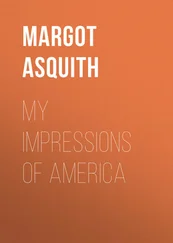European colonialism led to an equation between “race” and dominance, as settler colonists from Europe oppressed and exploited non-European (and therefore non-white) residents throughout the world. One of the starkest examples of this exploitation was the slave trade. The extensive transport of slaves to the United States—coupled with a relatively large population of European origin—led to the development of a society that was built upon racial violence and subordination. The genocide of indigenous populations further solidified the power of whites, who, given their numeric majority, were less threatened by a non-white revolution than were their counterparts in other countries. In America, not only is whiteness synonymous with privilege, but the mobilization and defense of whites’ interests have fundamentally shaped every aspect of life. Even the initial ethnic differences among European settlers slowly blurred, creating one uniform “white” group—at which point whiteness became increasingly associated with intelligence and a strong work ethic (Levine-Rasky 2016). As the privileges of whiteness grew greater, the desire of individuals to be included within this group became stronger.
The boundaries of whiteness have been vigorously policed by a variety of American institutions. López (2006; originally published in 1996) provides a compelling account of the ways in which racial categories have been constructed by social institutions, especially the law, in the face of individual pressure for inclusion. In addition to legal measures, “white” has also been a subject of contestation in educational institutions, neighborhoods, social organizations, government policy, the media, and innumerable personal interactions in daily life. As Jacobson (1999) has demonstrated, the racialization of Jews is a particularly illustrative example of the ways in which whiteness is articulated and policed and, ultimately, of how malleable it is. While anti-Semitic movements and ideologies are still evident in contemporary America, Jews’ identification as white is assumed by all but the most extreme white supremacists. Yet there was a time less than a century ago when Jews were often considered to be non-white. One example of the discriminatory treatment that Jews received during that time comes from elite colleges and universities that had quotas designed to restrict the number of Jewish matriculates (Karabel 2005). Jewish fraternities arose in response to the exclusion of Jews from white social organizations (Sanua 2018). And restrictive covenants prevented Jews from buying homes in a number of neighborhoods throughout the country (Brooks and Rose 2013).
To many, these structural impediments to the economic and social opportunities of Jews might seem surprising. The fact that they are surprising is testament to the shifting boundaries of whiteness. But, while these boundaries may have shifted, one fact remains constant: whiteness is a definitive mark of privilege. Individuals and groups have fought bitterly for inclusion in the category of “white” for precisely this reason.
The whiteness that so many have striven to obtain has multiple manifestations. Perhaps the most important is the aforementioned privilege attached to this category. Ultimately, whiteness manifests itself in all circumstances as privilege, even if individuals may not view it as such. As critical race theorists note, “racial stratification is ordinary, ubiquitous, and reproduced in mundane and extraordinary customs and experience” (Brown 2008: 54). The privilege of whiteness is so interwoven with the “normal” functioning of institutions and the character of interactions that it is often noticed only in cases of rupture of the ordinary, for example when white supremacists use a racial slur. However, the power and privilege of whiteness do not require that overt racism survive; rather, advantages accrue to whites because the economic, political and social institutions of America have long been designed to secure white dominance. This may take the form of discrimination in lending, voter disenfranchisement, and a host of other ways that are not the product of individuals’ overt racism.
White identity is connected to privilege, as it is shaped in the set of social relations and interactions that are connected to white dominance. However, identity is typically formed at the individual level, so there is variation in the ways in which whites understand the meaning of their racial group membership. Some whites rarely think about their racial identity and may in fact believe that they have no race; this belief is, itself, a form of identity. Some whites may feel strongly attached to being white, either from a sense of pride (which can be connected to white supremacist affiliations) or from a sense of guilt (which can spur some whites down the path of anti-racist activism). White identity is important to understand, as it is connected to a host of political and social behaviors.
For example, attitudes toward non-white racial groups, immigration, and criminal justice policies can be influenced by white identity. In general, whites are more likely to be punitive toward those caught in the criminal justice system on the offending side, and they are also more likely to be opposed to immigration. Some of the attitudes whites hold toward non-whites—especially blacks and Latinos/as—are related to feelings of threat in front of a perceived loss of status and control (Craig and Richeson 2014b). In general, familiarity with white attitudes can provide the basis for understanding white behavior; changing attitudes can change actions, which in turn can reduce the ways in which whites act to maintain their privilege. In some cases, whites’ attitudes can lead them to affiliate with social movements that are designed to extend, secure, or challenge the benefits of whiteness. Some of the organizations that will be discussed later, such as the Tea Party, the Ku Klux Klan, and the liberal Center for a Fair Economy, are motivated by different dimensions of whiteness to shape their policies and actions.
Discussions of race and privilege can founder on notions that privilege is roughly equivalent to being rich—that privilege is an outcome rather than a structural position. This understanding of privilege suggests that there is no connection between race and privilege—that any group is equally able to make money through hard work and good choices. In addition, those adopting an individual-level understanding of race and privilege might point to the many whites who are not economically advantaged but have to struggle through their daily lives. How could such struggles possibly indicate privilege? However, privilege is much broader than simply a reflection of one’s income (Kimmel and Ferber 2009). Whites are advantaged over non-whites in myriad ways that apply to all whites, not just to those with a lot of money and education. It is important to note that whites are privileged relatively to non-whites not merely through the direct benefits of whiteness, but also through its function as a category of structural power and control. Regardless of the personal difficulties that an individual white person might experience, he or she is, ultimately, the beneficiary of his or her group’s dominant status. Access to resources and opportunities is substantially greater for members of the dominant group even if specific individuals are unable to take advantage of it . Just as all citizens of the United States benefit from the superior military defense of the nation when it comes to being protected from invasion, all whites benefit from the superior structural position of their group when it comes to the types of systematic advantage that this position grants them.
The benefits of structural advantage are often understood in monetary terms: whites make more money and have more wealth than blacks or Latinos/as. Thinking about racial advantage in terms of money is illuminating, but it can encourage people to explain away class differences as attached to individual-level characteristics—a strong work ethic or high intelligence, for instance. Evidence suggests that the source of racial advantage need not rest with the individual at all. For example, Royster’s (2003) study of racial differences in the social networks that help workers secure employment shows that whites have advantages over blacks without even trying. Whites refer friends for jobs, and the racial segregation of many friendship groups means that white people’s friends are typically white. Even in a group of similarly trained, similarly skilled black and white working-class men who graduated from the same high school in Baltimore, whites had higher status jobs and shorter periods of unemployment. This racial difference in work opportunities was due almost exclusively to the different informal networks to which black and white men had access (Royster 2003).
Читать дальше












